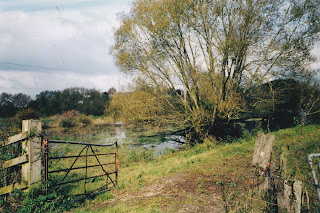Blogtober 29 - Fun with flags
Flags fluttering on boats always look great but there is also a lot of meaning behind the different designs and even the flag positions. For UK boats the law and maritime tradition both play their part in where, when and how flags are flown.
 |
| Looking smart - dressed over all |
The most important flag is the ensign. This shows which country a boat is registered in and is flown as close to the stern as possible. You will often see the Red ensign flown which is the national maritime flag and is frequently referred to affectionately as the red duster. It has a red background with a Unon Jack in the top quarter nearest the pole. There are other special ensigns including dark blue and defaced (with pictures on) which denote different things and require special warrants to use. More unusual is the pale blue ensign of the RAF sailing association. It remains illegal to fly a Union Jack on a civilian vessel. The term Jack comes from a shortening of Jacobus - the Latin version of James - as it was James VI who ordered the creation of the Union flag in 1606.
 | ||
| All the summer blues |
The spreaders of the mast are used for the next precedence flags. The starboard spreader is used for signalling including quarantine flags (the Q flag) and courtesy flags which acknowledge the country you are visiting. There are many areas where flags are highly politicised and it is wise
to look around at other boats before choosing what to fly. The Basque
country stands out as one of them. We have also flown courtesy regional
flags several times underneath country flags such as the Breton Gwenn-ha-du
(literally translated as black and white). On the port spreader is flown the house flag. These represent the crew of the boat - for us the red dragon of Somerset.
And finally, those little flags that are used when a boat is dressed overall - they are signal flags. The same type used by Nelson to spell out England expects that every man shall do his duty.





Comments
Post a Comment